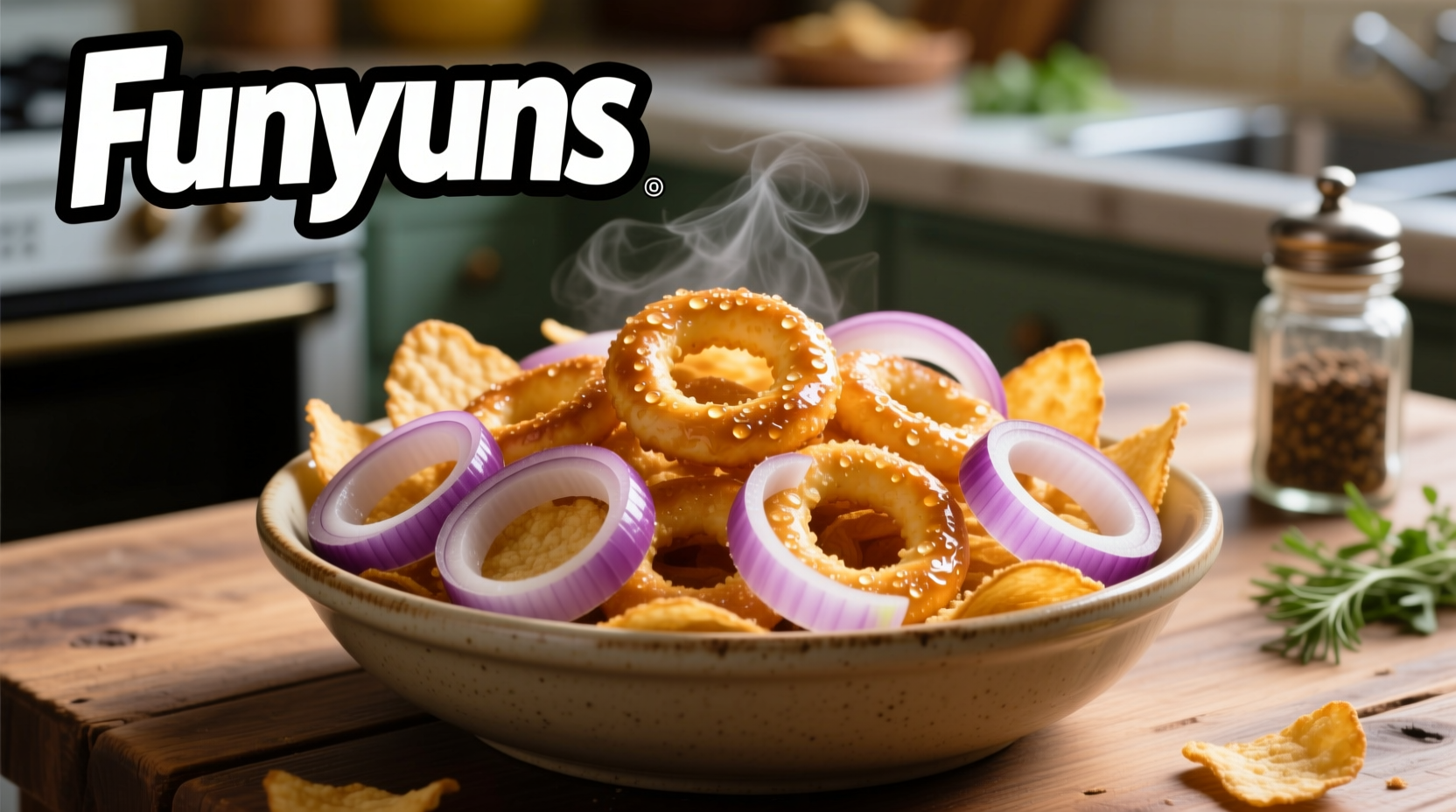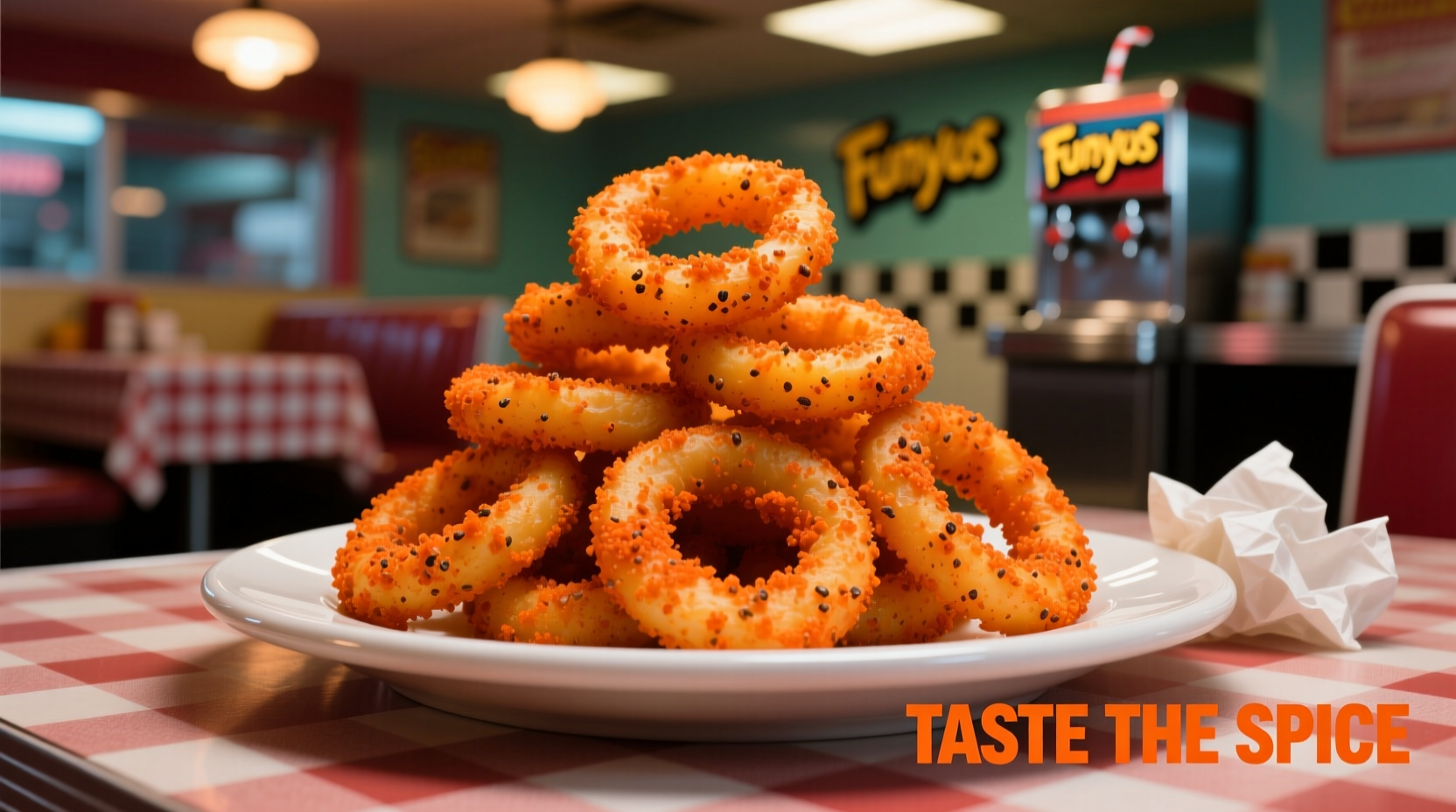Understanding Funyuns: More Than Just a Name
When you reach for that bright orange bag at the grocery store, you're probably wondering: are Funyuns actually made from onions? The short answer is no. Funyuns represent a clever marketing approach to snack food that has confused consumers for decades. As a culinary professional who's analyzed thousands of food products, I can tell you exactly what makes these crunchy rings unique and how they differ from traditional onion rings.
The Funyuns Reality Check: What You're Really Eating
Many consumers mistakenly believe Funyuns contain real onion pieces due to their distinctive shape and flavor profile. This misconception persists because of effective branding that connects the product visually and thematically with onion rings. However, the truth about what are funyuns made of reveals a different story.
| Characteristic | Funyuns | Traditional Onion Rings |
|---|---|---|
| Primary Ingredients | Corn meal, vegetable oil, maltodextrin, salt, onion powder | Onion slices, flour, egg, breadcrumbs, oil |
| Actual Onion Content | 0% whole onion (only powdered flavoring) | 100% whole onion slices |
| Preparation Method | Extruded, fried corn snack | Battered and fried onion slices |
| Nutritional Profile | Higher in sodium, lower in fiber | Higher in natural sugars, more fiber |
Funyuns History: From Concept to Cult Snack
Frito-Lay introduced Funyuns in 1969 as part of their innovative approach to snack food development. The product represented a significant shift in how snack companies approached flavor replication. According to Frito-Lay's official company history, the development team sought to create a snack that captured the beloved flavor of onion rings without the preparation complexity.
1969: Original Funyuns launch with basic onion flavor
1980s: Introduction of limited edition flavors
2005: Major recipe update to reduce artificial ingredients
2015-Present: Expansion into international markets with region-specific flavors
Decoding the Ingredients: What's Really in Funyuns
The funyuns ingredients explained reveal a carefully engineered snack. The primary component is corn meal, which forms the base structure. Vegetable oils (typically a blend of corn, canola, and sunflower oils) provide the frying medium. The distinctive onion flavor comes primarily from onion powder and artificial flavorings rather than actual onion pieces.
Nutritionally, a single serving (about 28g) contains approximately 150 calories, 8g of fat, 15g of carbohydrates, and 340mg of sodium. According to the USDA FoodData Central database, Funyuns contain no significant amounts of vitamins or minerals found in actual onions, such as vitamin C or potassium.

When Funyuns Make Sense (And When They Don't)
Understanding the context boundaries for funyuns versus real onion rings helps make informed choices. Funyuns serve well as:
- A convenient, shelf-stable snack option for lunchboxes or road trips
- A crunchy topping for casseroles and salads where onion flavor is desired
- A quick flavor enhancer for homemade dips and dressings
However, they shouldn't be considered a substitute for real onion rings when:
- Nutritional value is a priority (real onions provide fiber and nutrients)
- Authentic texture and cooking experience matters
- Dietary restrictions require whole food ingredients
Creative Uses Beyond the Bag
While funyuns vs real onion rings shows significant differences, Funyuns have found their place in American snack culture. Professional chefs sometimes use crushed Funyuns as a coating for chicken tenders or fish fillets, leveraging their consistent crunch and flavor profile. Home cooks often incorporate them into party recipes where convenience outweighs the need for fresh ingredients.
Nutritional Context: Making Informed Choices
When considering funyuns nutritional information, it's important to understand they function as a flavor delivery system rather than a vegetable serving. The FDA's guidance on food labeling confirms that products like Funyuns cannot claim vegetable content when they contain only powdered flavoring without actual vegetable matter.
For those seeking the health benefits of onions, fresh or frozen onion rings remain the better option despite requiring more preparation time. The natural quercetin and sulfur compounds in real onions offer antioxidant properties not found in the artificial flavorings of Funyuns.
Frequently Asked Questions
Do Funyuns contain any real onion?
No, Funyuns contain no actual onion pieces. They use onion powder and artificial flavorings to create the onion taste, but there are no pieces of real onion in the product.
How are Funyuns made if they don't use real onions?
Funyuns are made by extruding corn meal dough into ring shapes, then frying them and coating with a seasoning blend that includes onion powder, salt, and artificial flavors to mimic the taste of onion rings.
Are Funyuns healthier than regular onion rings?
Neither option is particularly healthy, but they differ nutritionally. Funyuns are lower in calories than deep-fried onion rings but contain more sodium and artificial ingredients. Real onion rings provide actual vegetable content with some nutrients, though they're higher in fat from frying.
Why are they called Funyuns if they don't contain onions?
The name "Funyuns" was created as a playful combination of "fun" and "onions" to suggest an enjoyable onion-flavored snack. The branding focuses on the flavor experience rather than ingredient composition, which is common in the snack food industry.











 浙公网安备
33010002000092号
浙公网安备
33010002000092号 浙B2-20120091-4
浙B2-20120091-4